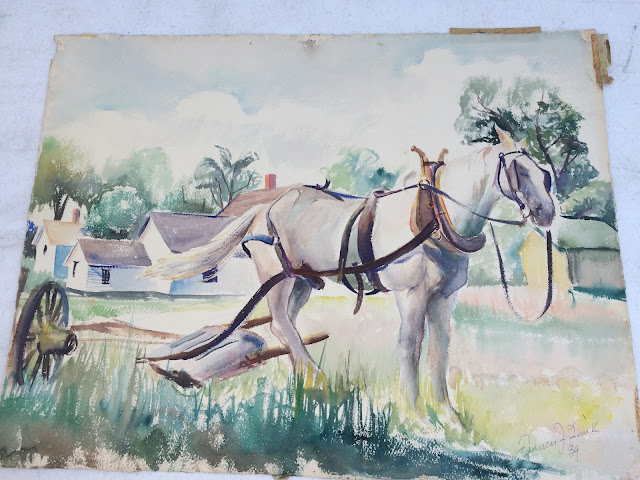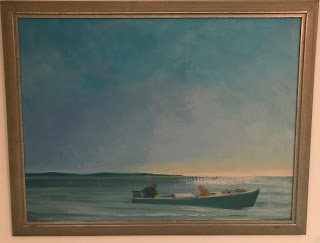In our exploration of the art work of Francis Quirk, we have seen that his most popular subject is portraits; he clearly was a student of the human form. And of course he loved his marine paintings with many works featuring sailboats and coastal Maine. And he executed a few landscapes.
But there are relatively few depictions of animals as the entire subject. Of course he did include dogs in portraits including Labrador retrievers, Irish setters, poodles and dachshunds . In these paintings, the pet may have been important tot he sitter, but to Quirk they seem to be elements added for visual interest like the plants he frequently included.
Below are the four artworks we have found that focus solely on animals. The first is a watercolor of horses moiling in a group. It has a more modern and expressive style than many of Quirk's disciplined studies. Of course the medium lends itself to a more expressive approach. It may have been executed when he was at his Arizona home.
 |
| Group of Active Horses by Francis J. Quirk |
The Second work is a pastel of a dachshund that is quite well done.
 |
| Dachshund Image by Francis Quirk |
The final works are watercolors of a draft horse and two goats. They were probably executed in Maine near Quirk's summer home in Saco. Both include a full background with traditional farm buildings. It seems that he was trying to capture more than the animal as he includes a wagon wheel and old structures in both images. These give the works an antiquated feel as if they are capturing the end of a bygone era that has now fully slipped away.
One can imagine Quirk heading off on a summer day to paint in the sunshine.
 |
| Draft Horse Watercolor by Francis Quirk |
 |
| Two Goats in Field Watercolor by Francis Quirk |










































